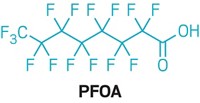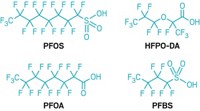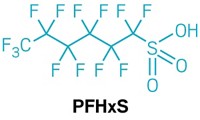Advertisement
Grab your lab coat. Let's get started
Welcome!
Welcome!
Create an account below to get 6 C&EN articles per month, receive newsletters and more - all free.
It seems this is your first time logging in online. Please enter the following information to continue.
As an ACS member you automatically get access to this site. All we need is few more details to create your reading experience.
Not you? Sign in with a different account.
Not you? Sign in with a different account.
ERROR 1
ERROR 1
ERROR 2
ERROR 2
ERROR 2
ERROR 2
ERROR 2
Password and Confirm password must match.
If you have an ACS member number, please enter it here so we can link this account to your membership. (optional)
ERROR 2
ACS values your privacy. By submitting your information, you are gaining access to C&EN and subscribing to our weekly newsletter. We use the information you provide to make your reading experience better, and we will never sell your data to third party members.
Environment
Chronic exposure limit set for PFOA in drinking water
EPA addresses persistent legacy chemicals linked to health problems
by Jessica Morrison
May 23, 2016
| A version of this story appeared in
Volume 94, Issue 21
Water utilities should notify consumers when perfluorooctanoic acid (PFOA) and perfluorooctane sulfonate (PFOS) exceed 70 parts per trillion—individually or combined—in drinking water, under new guidelines released on May 19 by the Environmental Protection Agency. The long-awaited advisory aims to reduce chronic exposures to the persistent fluorochemicals in drinking water. Environmental groups, which have long been pushing EPA to set a limit for the fluorochemicals in drinking water, are disappointed that the advisory is only voluntary. The agency “highlights the fact that this is a chemical that you do not want in your water or the environment,” says David Andrews, senior scientist at the Environmental Working Group, an environmental advocacy organization. “But we think [EPA] could have taken a bigger step to protect public health,” he adds. The chemicals, which were used to manufacture iconic household brands such as DuPont’s Teflon and 3M’s Scotchgard, persist indefinitely in the environment and have been linked to disease in humans. More than a decade ago, the fluorochemical industry pledged to end production of PFOA and PFOS by 2015. EPA says the companies have met their stewardship commitments.





Join the conversation
Contact the reporter
Submit a Letter to the Editor for publication
Engage with us on Twitter